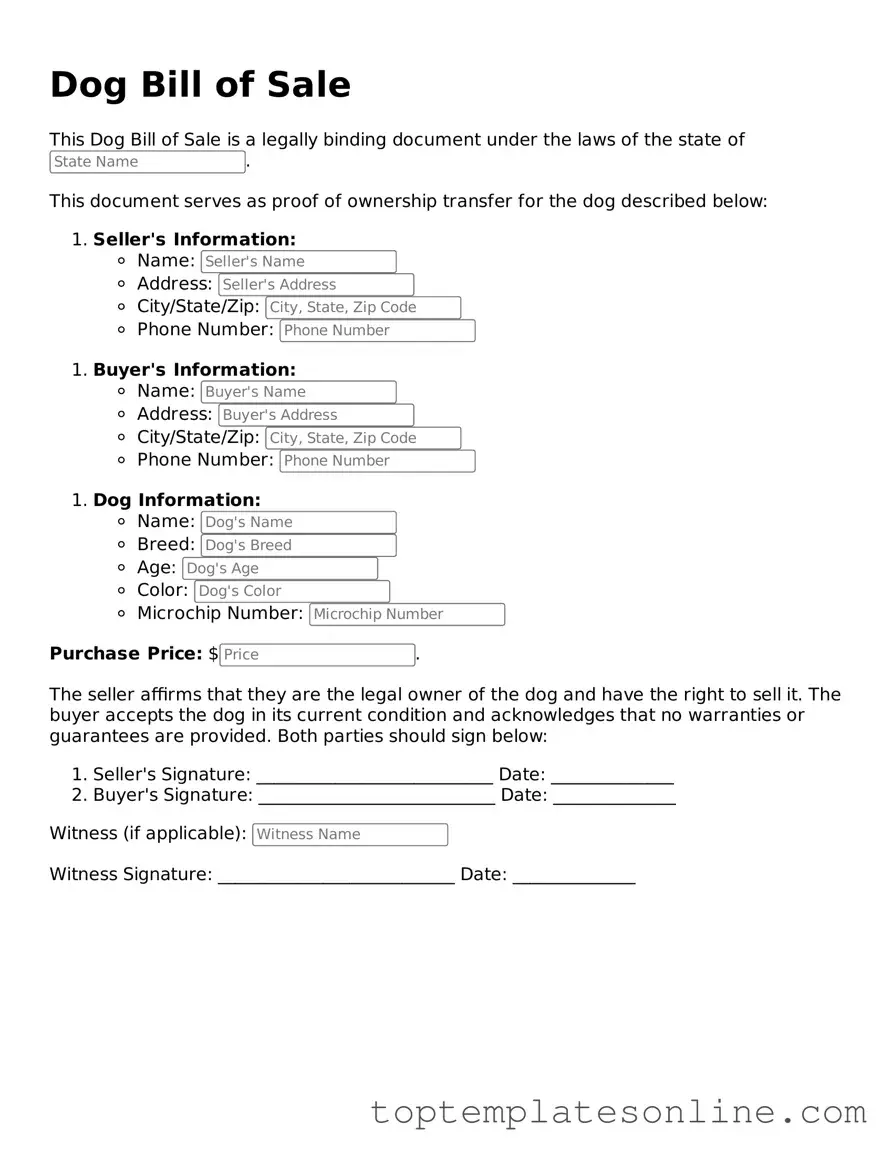When bringing a new furry friend into your home, it is essential to understand the importance of a Dog Bill of Sale form. This document serves as a legal record of the transfer of ownership from the seller to the buyer, ensuring that both parties are protected throughout the process. Typically, the form includes vital information such as the dog's breed, age, and any unique identifying features, like microchip numbers. Additionally, it outlines the sale price, payment method, and any warranties or guarantees regarding the dog’s health and temperament. By signing this form, the buyer acknowledges their responsibility for the dog’s care, while the seller confirms that they are relinquishing all rights to the animal. This simple yet crucial document not only fosters transparency between the parties involved but also promotes responsible pet ownership, ultimately contributing to the well-being of the dog. Understanding the significance of a Dog Bill of Sale can help ensure a smooth transition for both the new owner and their canine companion.
